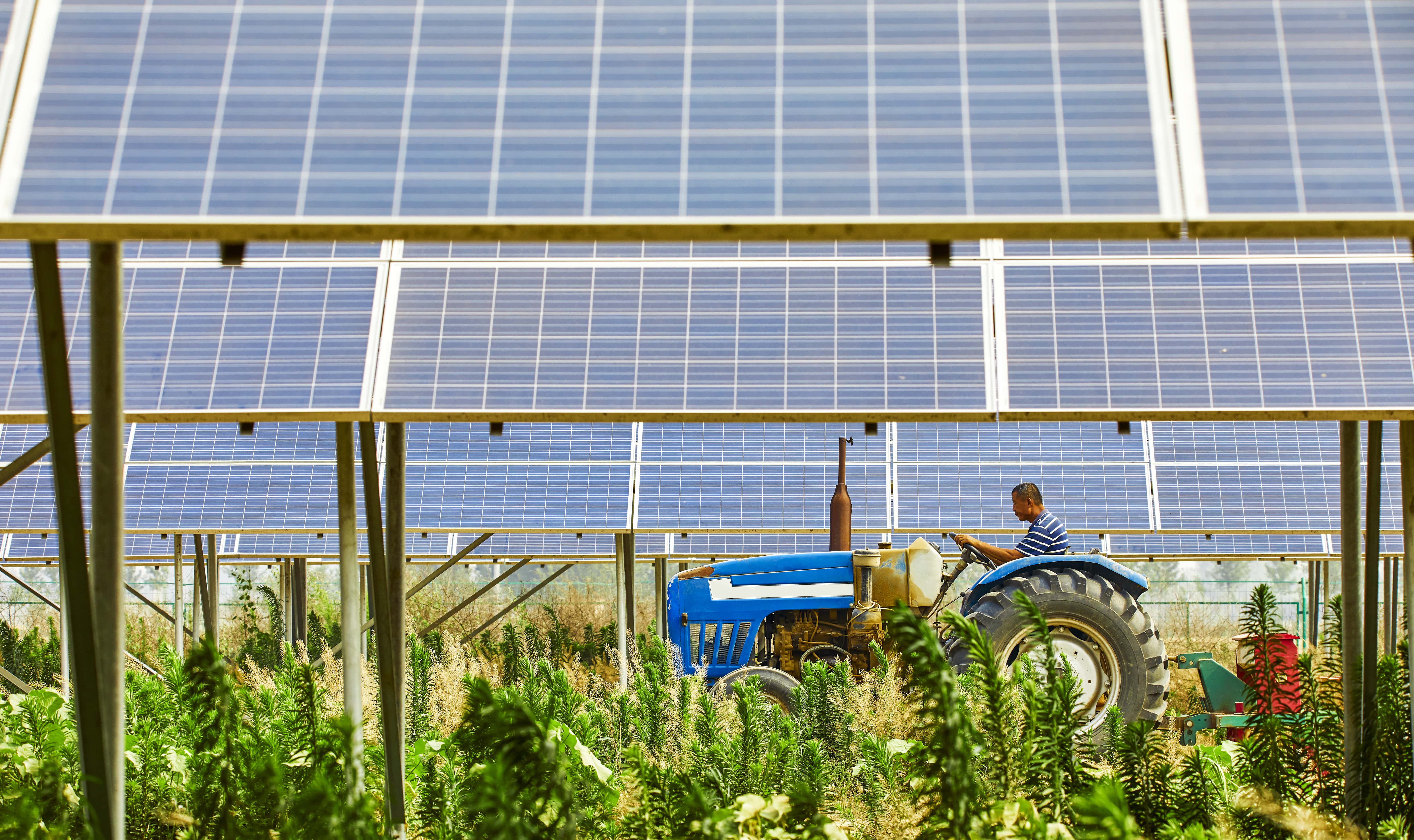Solar Power for Agriculture: The Future of Food

Along with climate change, food security is one of the most pressing concerns of our ever-evolving planet. Discover innovations and solutions that scientists and farmers are developing and using around the world--ones that marry agriculture and solar energy.
Farms are the lifeblood of the human race, but they are also part of an industry that consumes enormous amounts of energy and water. Agriculture, forestry, and land-use change produce around 25% of greenhouse gas emissions, while over 70% of freshwater is used for agriculture.
In this article, we explore how solar energy can transform the agriculture sector. Learn how it can enhance sustainability and productivity, increasing food security for all.
Solar power and agriculture
We are well aware of the advantages of solar power in homes. Many of these benefits apply to agriculture as well. Let’s take a look.
 Applications of solar power in agriculture
Applications of solar power in agriculture
Solar energy can be harnessed for various day-to-day operations that are crucial to keeping farms productive and profitable. Here are a few of them.
Drying crops and grains
Drying is “an energy-intensive and cost-effective method to improve the storability of various types of agricultural products.” However, with traditional open-air drying, farmers run the risk of spoiled crops. A solar drying method can protect their harvest from pests and unpredictable weather--all while drying crops faster and at a more even rate.
In a review published in ScienceDirect, researchers studied various solar drying technologies that offer efficient, cost-effective, sustainable, and renewable ways to conserve crops in Asian and sub-Saharan African countries. According to the authors, “Solar drying technology presents great potential as an eco-friendly method to reduce post-harvest losses in low and middle-income countries.”
Check out this video of a solar greenhouse dryer featured by the Solar Impulse Foundation.
 Solar-powered irrigation systems (SPIS)
Solar-powered irrigation systems (SPIS)
To pump and distribute irrigation water, farmers need a consistent and reliable energy resource. But, in far-flung rural areas, diesel fuel is expensive, and there is often unreliable access to the electricity grid. Solar-powered irrigation can help farmers overcome these energy shortages, offering them an affordable, renewable, and reliable power source.
In the uplands of Camarines Sur, a province in the Philippines, farmers had to wait for the rain to plant rice. With an SPIS now in place, they can plant rice in three cropping seasons.
Powered by 60 solar panels, the Aguik-ican Malawag SPIS can pump an average volume of 1,000 cubic meters in 6 to 8 hours. The system’s water tank has a capacity of 220 cubic meters and has a 100-meter pipe for water distribution. The pump is connected to Aguik-Ikan Creek and can discharge 35.42 liters per second, while the supply pipe can discharge 20.62 liters per second.
How has this SPIS benefited the rice farmers of Malawag? Let’s take a look at the numbers, as shared by Edgardo Ruin, president of the Aguik-Ican East Farmers Association, to the Department of Agriculture.
 Here’s a video of SPIS installed by the Department of Agriculture in the region, the first of which shows the SPIS in Aguik-Ican.
Here’s a video of SPIS installed by the Department of Agriculture in the region, the first of which shows the SPIS in Aguik-Ican.
“Many of us want more renewable energy, but where do you put all of those panels?” asks Greg Barron-Gafford, associate professor at the University of Arizona School of Geography and Development. “As solar installations grow, they tend to be out on the edges of cities, and this is historically where we have already been growing our food. So which land do you prefer--food or energy production?”
With agrivoltaics, the answer to Barron-Gafford’s question is both. In agrivoltaics, photovoltaic (PV) panels are installed at a height that allows plants to grow and animals to graze underneath the panels. Harvesting solar energy along with food can make farms more sustainable and profitable, resulting in higher yields, more renewable electricity, and less water used.
In a study published in Nature Sustainability, Barron-Gafford and his team set up three parcels of land: one exclusively for crops, another for solar panels, and the third a combination of crops and solar panels. The team chose three crops: chiltepin peppers, jalapeno peppers, and cherry tomatoes.
Observing the farmland for three months, they discovered that the agrivoltaics system had a significant impact on three factors that affect plant growth and reproduction, which are “air temperatures, direct sunlight, and atmospheric demand for water.”
Here are some key findings from their study, as discussed in Science Daily, Clean Technica, and ZME Science.
 Here’s a video about agrivoltaics which includes an interview with Barron-Stafford.
Here’s a video about agrivoltaics which includes an interview with Barron-Stafford.
Demand for food is growing. The global population is expected to increase to over 10 billion by 2050, requiring an estimated 50% increase in agricultural production. Our world is battling with overpopulation, climate change, water scarcity, and a looming food crisis. Harnessing solar power for agriculture is the sword we should wield to win this fight.
As one of the Top 21 EMS companies in the world, IMI has over 40 years of experience in providing electronics manufacturing and technology solutions.
We are ready to support your business on a global scale.
Our proven technical expertise, worldwide reach, and vast experience in high-growth and emerging markets make us the ideal global manufacturing solutions partner.
Let's work together to build our future today.
Other Blog





